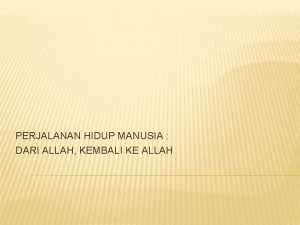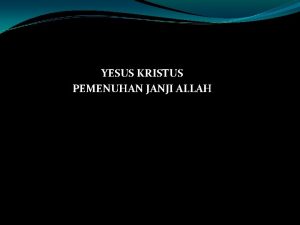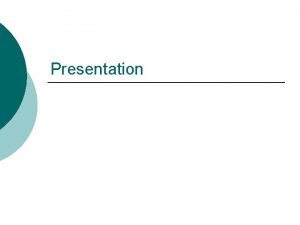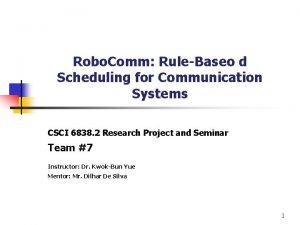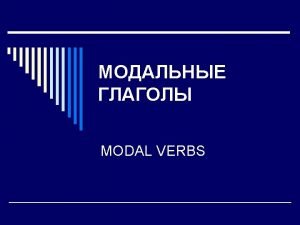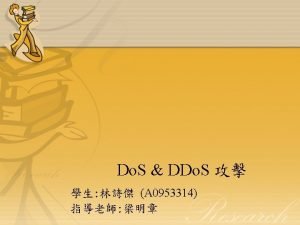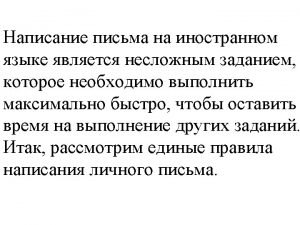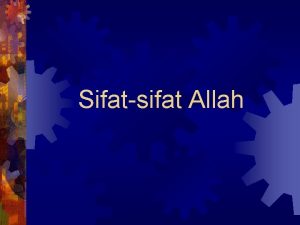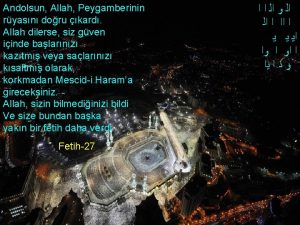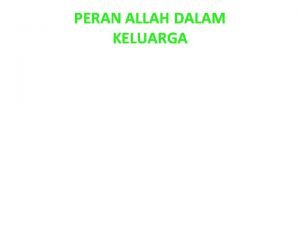Acknowledgements First of all thanks to Allah our


















































- Slides: 50




Acknowledgements

First of all, thanks to Allah our greatest Lord for his gifts especially enlightening our life with knowledge

I would like to welcome the presence of Prof. Dr. AHMED EL-BADAWY KHALIL Prof. of Anaesthesia& ICU CAIRO University There is no word can express the honor that we have by his attendance. I would also like to express my gratitude to Prof. Dr. EHAB AHMED ABD EL- RAHMAN Prof. of Anaesthesia& ICU Benha University, for his support and great help , his presence gives me great honor.

I would like to express my thankfulness for Prof. Dr. SAAD IBRAHIM SAAD Prof. & Chairman of Anaesthesia & ICU Benha University, Prof. Dr. REDA KALLIL KAMEL Prof. of Anesthesia & ICU Benha University,

Ass. Prof. Dr EHAB SAID ABD EL- AZEEM Ass. Professor of Anaesthesia & ICU Benha University for his help, precise advice and his panoramic viewing for all points of the work.

I would like to express my special and deep thanks to all staff members and colleagues at the anaesthesia department , Benha university for their continuous support, cooperation and help. .


INTRODUCTION Caudal epidural block (CEB) is one of the most preferred pediatric regional anesthesia methods for infants and children who need operations under umbilicus level, for example urogenital, rectal, inguinal, lower extremity surgeries. CEB is relatively easy to perform and provides efficient analgesia for both intraoperative and postoperative period. Although there are some studies which report caudal anaesthesia as the sole anaesthetic method in particular cases for infants and children, caudal anaesthesia is still combined with general anaesthesia for most of the cases(Brenner et al. , 2010).

INTRODUCTION Caudal epidural block offers excellent analgesia without the side effects of intravenous opioid medications, eg. nausea, sedation, and respiratory depression. Caudal blocks are generally performed after induction of general anesthesia in children. Traditional teaching relies on the subjective sensation of “give” or “pop” felt by the operator as the advancing needle pierces the sacrococcygeal ligament and the lack of resistance to injection of the local anesthetic. Although the block is easily performed, the success rate is less than 100% and varies with the experience of the operator. ( Krishna et al. , 2004). .

INTRODUCTION Anatomical Considerations At birth, the sacral plate, which is formed by five sacral vertebrae, is not completely ossified and continues to fuse until approximately 8 years of age. The incomplete fusion of the sacral vertebral arch forms the sacral hiatus. The caudal epidural space can be accessed easily in infants and children through the sacral hiatus. Due to the continuous development of the sacral canal roof, there is considerable variation in the sacral hiatus. In children, the sacral hiatus is located more cephalad compared to adults (Igarashi et al. , 1997).

INTRODUCTION Indications i. Whenever possible all children should receive RA in some form or other, appropriate to the proposed surgery. ii. RA in children is usually administered and practiced after induction of general anaesthesia except in certain situations like, premature baby or ex-premature baby up to a conceptual age of 60 weeks when there is fear of post operative apnoea. It is a well-recognized fact that the incidence of post operative apnoea is least under spinal block as compared to spinal with sedation or general anaesthesia. Whatever technique is practiced in this group of infants proper monitoring is a must. iii. Children undergoing thoracic and upper abdominal surgeries those need aggressive pain management in the post-operative period(Sartorelli et al. , 1992).

INTRODUCTION Contra indications a. Lack of parental consent b. Infection at the site of administration of the block c. Any coagulation disorder.

INTRODUCTION Techniques • ‘‘Single-Shot’’ Caudal Block

INTRODUCTION • ‘‘Catheters’’ Caudal Block

INTRODUCTION COMPLICATIONS Complications of CA are uncommon (0. 7 per 1000 cases): • Dural tap. This is more likely if the needle is advanced excessively in the sacral canal. • Vascular or bone puncture can lead to intravascular injection and consequently LA systemic toxicity. • Exceeding the maximal allowed LA dose risks overdose and related cardiovascular or neurological complications. • Delayed respiratory depression secondary to caudally injected opioid. • Urinary retention. • Sacral osteomyelitis is rare (one case report)(Wittum S et al. , 2003).

INTRODUCTION Adjuvant agents Are pharmacological drugs that, when co-administered with local anaesthetic agents, may improve the speed of onset, the quality and/or duration of analgesia. A wide range of drugs has been assessed for both neuraxial and peripheral nerve blocks. The adjuvants used in clinical practice in the UK and also briefly mention other drugs that have been used for neuraxial administration and peripheral nerve blockade to provide perioperative analgesia are ; adrenaline; opioids; clonidine; dexamethasone; ketamine; dexmedetomidine; magnesium; midazolam; neostigmine; opioids; sodium bicarbonate(Sudhakar R, 2012).

INTRODUCTION Dexmedetomidine Is a highly specific and selective alpha-2 -adrenergic agonist with sedative, anxiolytic, and analgesic effects. The sedative state produced by dexmedetomidine is unique in a number of ways and is dose dependent. At low doses, it produces sedation wherein the patient is drowsy but remains arousable and cooperative. When the dose is large enough, it produces deep sedation or even general anesthesia. Minimal respiratory depression is observed even when large doses are used (Huupponen et al. , 2008).

INTRODUCTION Pain Is defined by the International Association for the Study of Pain (IASP) as an unpleasant sensory and emotional experience associated with actual or potential tissue damage, or described in terms of such damage or both. Pain is an unpleasant but very important biological signal for danger. Nociception is necessary for survival and maintaining the integrity of the organism in a potentially hostile environment (Scholz and. Woolf. , 2002).

INTRODUCTION DEVELOPMENT OF PAIN PATHWAYS In the peripheral nervous system, C-fibres are mature in neonates although their cortical connections at the level of the dorsal horn are immature. However, interestingly, at the same stage A-Beta fibres show extended connections within the spinal cord that can produce nociceptive signalling from lower intensity stimuli. These A-Beta fibres only recede once C-fibres have matured. The result of this observation is that there is far less discrimination between the perception of noxious and non-noxious stimuli in the paediatric patient. Furthermore, and of added clinical importance, is that inhibitory pathways are not fully developed in the spinal cord during early life. The combination of widened receptive fields, lower sensory discrimination and reduced inhibitory pathways results in the immature nervous system in paediatric patients experiencing more pain in response to noxious stimuli and not less as was previously believed(Young. , 2005).

INTRODUCTION FLACC SCORE Score ranges from 0 to 10. 0– 3 = mild, 4– 6 = moderate, 7– 10 = severe pain. Score of ≥ 3 represents pain.


PATIENTS AND METHODS Exclusion criteria vchildren with bleeding diathesis. v. Neuromuscular or spinal diseases. v. Children with back problems and local skin infections of the caudal area. v. Children with mental retardation or delayed development. v. Known allergy to the used drugs.

PATIENTS AND METHODS This study was conducted on 80 children aged between 1 and 5 years old, ASA grade I of both sexes. All children were scheduled for elective distal penile hypospadius repair and uncomplicated right and left congenital inguinal hernia repair surgeries. All cases were done in Benha University Hospitals Children Hospital and after approved consent of the parents. Patients were randomly assigned for one of four groups, each group composed of 20 patients, according to the type of caudally injected drug.

PATIENTS AND METHODS Anaesthesia monitoring will include noninvasive blood pressure, pulse oximetry, ECG, capnography, anaesthesia will be induced with halothane in oxygen. An i. v. cannula will be inserted and routine preoperative medication with atropine (0. 01 - 0. 02 mg/kg) will be given. After induction of anaesthesia, laryngeal mask with appropriate size according to body weight will be inserted. Anaesthesia will be maintained with 1. 5– 2% halothane in oxygen. The patients then will be positioned on the lateral side and the sacral hiatus will be determined and needle will be advanced in the caudal epidural space then the patients will be randomly divided into four groups according to type of the drugs will be injected in the caudal space:

PATIENTS AND METHODS Group 1(CB) caudal bupivacaine 1 ml/kg(0. 125%)(control group). Group 2(CD) Caudalbupivacaine 1 ml/kg(0. 125%)+dexmedetomidine(2 µg/kg). Group 3 (CF) caudal bupivacaine 1 ml/kg(0. 125%)+fentanyl (2 µg/kg). Group 4(CC) caudal bupivacaine 1 ml /kg(0. 125%)+ clonidine(2 µg/kg).

PATIENTS AND METHODS Then the patients will be returned to the supine position again and surgery will be planned to be started after 15 minutes. After finishing of surgery and when the patients will be awake in the recovery area the heart rate, arterial blood pressure, peripheral oxygen saturation, ventilatory frequency, pain score and sedation score will be recorded at 30, 60 min, and 2, 3, 4, 6 and 12 h postoperatively. Postoperative assessments will be made by medical and nursing staff unaware of group allocation. The analgesic effect of the caudal adjuvants will be evaluated by using a pain scoring system. If the patient complains of pain i. v. pethidine (1 mg/kg) will be given, with assessing the time of rescue analgesic. Any episodes of nausea, vomiting, urinary retention or pruritus were noted. Data will be collected, classified and statistically analyzed.

PATIENTS AND METHODS FLACC score will be the pain score used in the study. Face, Legs, Activity, Cry and Consol ability-scale. Score ranges from 0 to 10. 0– 3 = mild, 4– 6 = moderate, 7– 10 = severe pain. Score of ≥ 3 represents pain. Modified Ramsay Scale will be used as the sedation scale for postoperative assessment. A score of 2 to 3 is anxiolysis, 4 to 5 is moderate sedation, 6 is deep sedation.

PATIENTS AND METHODS MODIFIED RAMSAY SCALE


RESULTS Comparing the studied groups regarding age, weight, Sex, Duration of operation, No of patients

RESULTS Comparing the studied groups regarding type of operation

RESULTS Comparing the studied groups regarding the intraoperative HR, SBP, DBP, RR, SPO 2, ETCO 2

RESULTS Comparing the studied groups regarding HR over the postoperative follow up

RESULTS Comparing the studied groups regarding SBP over the postoperative follow up

RESULTS Comparing the studied groups regarding DBP over the postoperative follow up

RESULTS Comparing the studied groups regarding SPO 2 over the postoperative follow up

RESULTS Comparing the studied groups regarding RR over the postoperative follow up

RESULTS Comparing the studied postoperative follow up groups regarding pain score over the

RESULTS 1 Comparing the studied groups regarding sedation score over the postoperative follow up

RESULTS Comparing the studied groups regarding start of pain after the end of operation

RESULTS Comparing the studied groups regarding total required doses of pethidine

RESULTS Comparing the studied groups regarding numbers and percentages of patients with postoperative complications


DISCUSSION Regional anesthetics may require adjuvant drugs to improve quality of motor, sensory block and relieve various degree of patient anxiety observed during anesthetic period (Miller, 1998). The drug that by their qualities, can be used as adjuvants in anesthesia include alpha -2 adrenergic agonists (α 2) which provide sedation, anxiolysis, hypnosis and analgesia. Another advantage is that their effects are easily reversible with alpha-2 adrenergic antagonists such as atipamazole (with affinity for receptors of 60 : 1, compared to dexmedetomidine), it rapidly reverses the sedation and cardiovascular effects at doses from 15 to 150µg/kg.


CONCLUSIONS & SUMMARY caudal additives like dexmedetomidine, fentanyl and clonidine prolong the duration of post operative analgesia after pediatric lower abdominal surgeries but bupivacaine dexmedetomidine mixture produced the longest duration of postoperative analgesia than the others and were associated with some degree of postoperative sedation which was accepted as it had been of minimal degree and short duration.

 First of all thanks to allah
First of all thanks to allah Thank you to all our sponsors
Thank you to all our sponsors Semua akan kembali kepadanya
Semua akan kembali kepadanya Give thanks to the lord our god and king
Give thanks to the lord our god and king Name all rays
Name all rays Dalil asmaul husna al matin
Dalil asmaul husna al matin Jelaskan janji allah tentang juruselamat
Jelaskan janji allah tentang juruselamat Thinking affects our language which then affects our
Thinking affects our language which then affects our Our census our future
Our census our future Christ be our light shine in our hearts
Christ be our light shine in our hearts Our life is what our thoughts make it
Our life is what our thoughts make it We bow our hearts we bend our knees
We bow our hearts we bend our knees Our census our future
Our census our future Our life is what our thoughts make it
Our life is what our thoughts make it Money madness poem text
Money madness poem text Awareness of ourselves and our environment is:
Awareness of ourselves and our environment is: Is our awareness of ourselves and our environment.
Is our awareness of ourselves and our environment. God our father christ our brother
God our father christ our brother Our future is in our hands quotes
Our future is in our hands quotes Our awareness of ourselves and our environment
Our awareness of ourselves and our environment Awareness of ourselves and our environment is
Awareness of ourselves and our environment is All praise due to allah the most gracious
All praise due to allah the most gracious All praise belongs to allah
All praise belongs to allah Allah bless you all
Allah bless you all Welcome to our first meeting
Welcome to our first meeting First we shape our buildings churchill
First we shape our buildings churchill Habr
Habr You eat with your eyes first
You eat with your eyes first We first make our habits
We first make our habits King jesus all of heaven
King jesus all of heaven O lord our god how excellent is your name
O lord our god how excellent is your name Assalamualaikum and good day
Assalamualaikum and good day Alleluia alleluia give thanks to the risen lord lyrics
Alleluia alleluia give thanks to the risen lord lyrics American satan cda
American satan cda Thanks you for your listening
Thanks you for your listening Thanks for listen
Thanks for listen Olfctory
Olfctory Thanks for listening
Thanks for listening How to reply thanks
How to reply thanks Hypernates
Hypernates Christian kittl
Christian kittl Thanks to god for my redeemer
Thanks to god for my redeemer Oh give thanks to the lord for he is good
Oh give thanks to the lord for he is good спасобо
спасобо 謝千萬聲
謝千萬聲 Thanks for your listening!
Thanks for your listening! Thanks for teamwork
Thanks for teamwork Kwakiutl prayer of thanks
Kwakiutl prayer of thanks Dear john last letter
Dear john last letter Vote of thanks quotes for webinar
Vote of thanks quotes for webinar Is the gulf stream warm or cold
Is the gulf stream warm or cold


